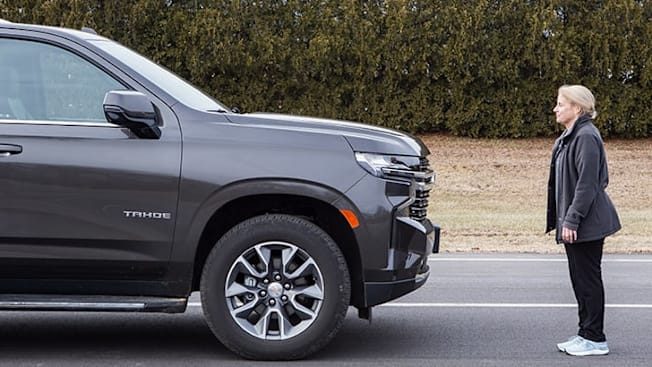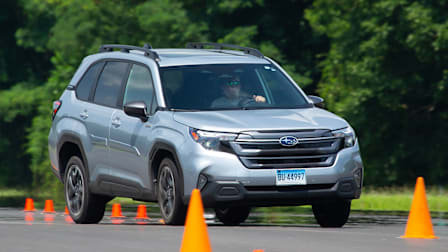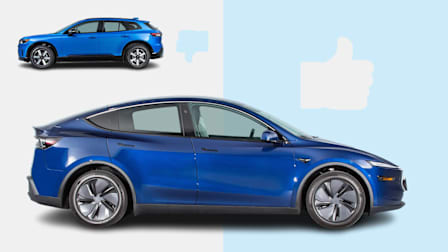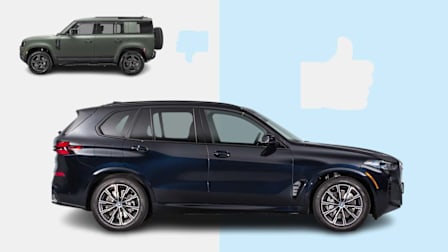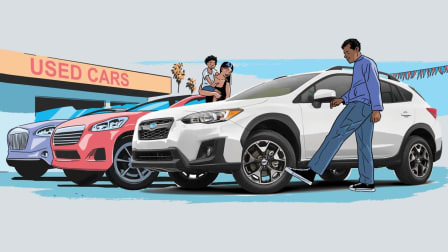As SUVs have grown in popularity, automakers have given them more aggressive exterior designs that have reduced forward visibility. For example, drivers of a 1997 Honda CR-V could see 68 percent of the area 33 feet in front of the vehicle, but drivers of a 2022 model can only see 28 percent of that same area.
By comparison, sedans retained most of their visibility over the years. Although full-sized pickup trucks suffered from poor sightlines regardless of model year, those larger trucks are more common on today’s roads, thereby increasing their collective danger. (A 2021 Consumer Reports analysis of industry data found that the market share of full-sized trucks grew 12 percent between 2000 and 2022.)
To assess vehicles’ visibility, IIHS positions a camera in the driver seat at various heights, to account for different-sized drivers. The camera rotates to capture a 360-degree image that shows the driver’s field of vision. Then, software creates maps of the blind spots and identifies the nearest points on the ground that the driver would be able to see. The results showed that drivers can see less in newer cars than in older cars.
“Part of the appeal of taller and higher vehicles is that drivers often feel they have a commanding view of the road around them," says Jennifer Stockburger, director of operations at Consumer Reports’ Auto Test Center. "But this study shows just the opposite. The amount drivers can’t see is actually increasing.”
In a statement, IIHS president David Harkey called the decrease in visibility “concerning.” He said that the trend may be at least partially responsible for the 37 percent increase in pedestrian fatalities and 42 percent increase in cyclist fatalities on U.S. roads during the same time period.
Stockburger says that new safety technology may be able to help prevent some of these crashes. “While there is no substitute for being able to see out of a vehicle, driver visibility aids and systems like automatic emergency braking should be a priority on some of the largest vehicles,” she says.
When shopping for a new vehicle, she recommends taking visibility into account—not just while driving, but in slower speed maneuvers like parking. Car buyers should also look for vehicles with driver aids like front cameras or sensors, which can help alert you to what you can’t see. “Not only does good visibility make a car safer, it also makes it easier to live with.”
The IIHS says it is in the process of collecting visibility data on about 150 vehicle models to explore the relationship between blind spots and crashes.
